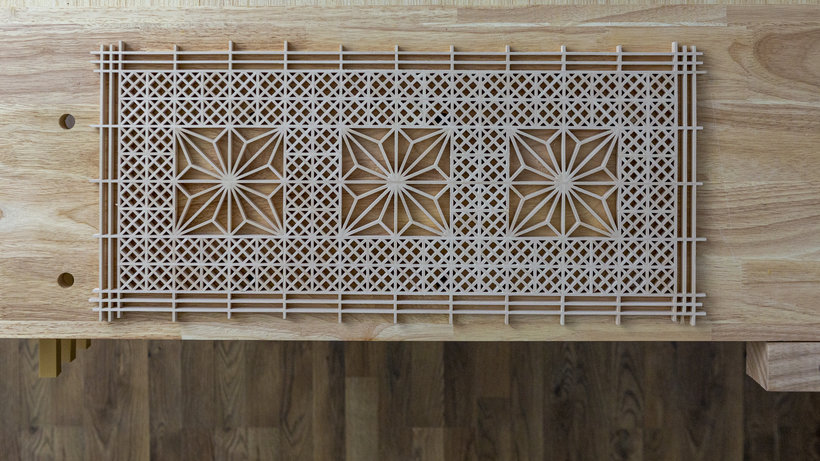Your cart is currently empty!

Kumiko and Kumiko Woodworking

A centuries old technique, kumiko woodworking involves creating decorative designs by friction fitting strips of wood into grooves and angles. There are no nails or metal fasteners used and it is a very skilled craft.
Hinoki cypress is the traditional choice but other straight-grained softwoods work well as well. The main thing is to use boards with little defects, minimal color differences and straight grain.
The Technique
Kumiko woodworking is an ancient and delicate Japanese technique that assembles small wooden pieces to create intricate patterns. No nails are used in this process, instead chisels, planes and saws are used to make small adjustments to each piece before being fitted together.
Since the Asuka era (600-700 CE), the nearly 200 traditional patterns used in kumiko have been passed down from generation to generation. Each design has a meaning and is often mimicking a pattern in nature that is believed to be a good omen.
For example, the Asanoha pattern resembles a hemp leaf and is considered an effective talisman. Another popular design is the Shippou pattern, which represents a set of treasures in Buddhist scriptures.
Founded in 1982 by Matsuo Tanaka, Edo Kumiko Tatematsu carries on the traditional techniques while also making new creations that can be adapted to modern living. Sadako Takemura, who manages the company, says that they aim to produce products that reveal remnants of the past while bringing tradition into contemporary life.
The Materials
Kumiko woodworking uses thin slats of wood that are cut at precise angles and pressure-fit together to create intricate geometric lattice work. It is an ancient art form that was most commonly used to decorate shoji screens, the room partitions in Japanese homes and businesses.
The motifs are traditionally linked to health, beauty and longevity. Some examples include the red plum blossom, which symbolizes vitality and longevity; the water caltrop pattern, which is said to represent a lifelong connection to the sea; and the tortoiseshell pattern, which is a symbol of strength and endurance.
To make your own kumiko, you need basic tools such as a plane and a saw. In addition to this, you can also use a variety of hand tools such as chisels and knives.
The Patterns
The Kumiko woodworking technique uses thin pieces of wood, slit and grooved with precision, to create intricate patterns. They are pressure-fitted together without the use of nails or glue.
This delicate and sophisticated art, developed in the Edo period of 1603-1868, is characterized by nearly 200 different traditional patterns. Each design evokes or mimics a pattern found in nature, and is believed to be good luck.
For example, the kuruma kikko pattern is based on the tortoise shell and is imbued with a wish for eternal prosperity. Rindo, a gentian flower pattern, represents sincerity, justice and tolerance.
Kumiko designs are used as both stand-alone panels or incorporated into furniture and cabinetry. In The Art of Kumiko, professional furniture maker Matt Kenney guides you through the techniques and knowledge needed to make these beautiful patterns by hand. He includes step-by-step instructions for 10 patterns and cutting diagrams to help you build original decorative wall panels that pay homage to this centuries-old craft.
The Artisans
Kumiko is a woodworking technique that creates decorative patterns without the use of nails. Skilled practitioners assemble hundreds of miniscule pieces to form a complex lattice design based on horizontal and vertical lines.
There are more than 200 traditional patterns, with motifs representing strength, health, beauty and longevity. Many are derived from flowers, trees and plants that are important to Japanese culture.
For example, the sakura-kikko pattern is a lovely expression of cherry blossoms. This is the most beloved flower in Japan and its patterns have been associated with prosperity, longevity and health since ancient times.
Kumiko joinery is a refined art that has been passed down through generations of craftsmen. It is a highly evolved craft, requiring artisans with the intuition and skill to work within a few micrometres.
by
Tags: